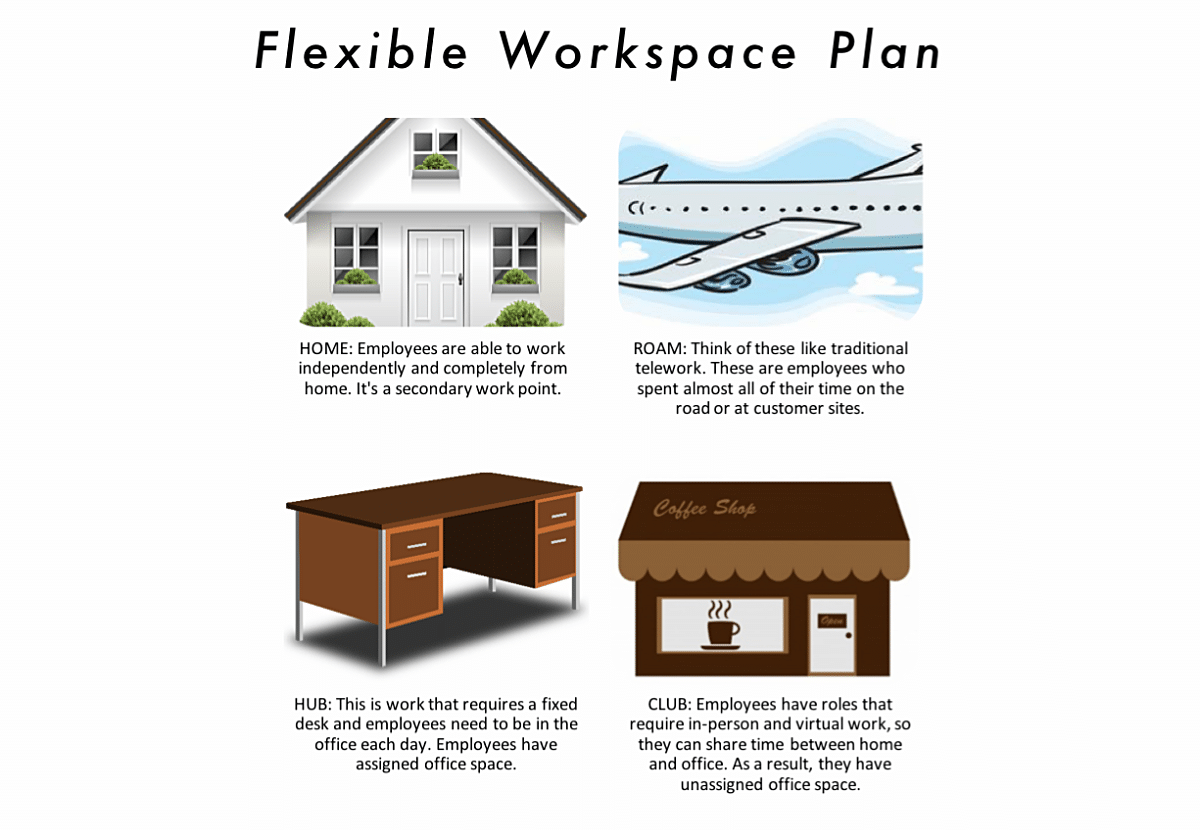How to Design Your Company’s Flexible Workspace Plan
I don’t believe there’s any doubt – employees want flexible work, if they can get it. Granted, not every job is able to have flexibility. For example, the barista at your local coffeehouse isn’t going to be able to work from home. But there are many positions that can and do work outside of a traditional office environment. The question for human resources professionals is, “What’s the best workspace setup?”
The reason I raise that question is because I wonder if we haven’t been focused on how broad the flexible workspace opportunity really is. Meaning it’s not a two-option decision of either work in the office or at home. There are other options. And, can we have a flexible workspace plan that allows employees the best of allworlds?
I’ve heard a couple of times recently about American Express’ BlueWork program, which helps the company and employees figure out the best workspace plan to get things done. The plan offers four options: home, roam, club, and hub. Check out the image for a brief description of each.
I really like the way this plan is designed because the company can create a workspace plan based on the needs of each category. For example, HOME employees have different needs in terms of support than ROAM employees. In addition, ROAM employees have different technology needs than HUB employees. It seems to me for each of these plans, companies should determine workflows in several areas.
Ergonomics: Employees need to have workspaces. That might be at home, in the office, or on the road. In some cases, the company is going to supply the workspace. And in other cases, the company needs to give employees good guidance on how to work effectively from a remote location.
Technology: I’d like to think we all realize that technology and work go together. But what kind of technology – desktop, laptop, tablet, or maybe BYOD? Then there’s software. Each different worker needs the best tech for their role. And they need to know how to use it.
Support: This is probably a good time to talk about support. I don’t mean managers (I’m saving that one for last.). I’m referring to HR, payroll, accounting, IT, purchasing, etc. These departments support the rest of the organization. They need to have policies/procedures/guidelines that allow each type of worker do get things done.
Management: Last but certainly not least, managers need to know how to work with each type of employee. This includes communication, goal setting, performance conversations, etc. Just because an employee isn’t in the office, doesn’t mean they don’t deserve management’s attention and support.
Organizations can evaluate jobs and survey employees on the needs of their position to determine the best option for their flexible workspace. I can also see where there might be times when an employee takes on a special project and their role must be re-evaluated. (as in, “I was CLUB but now that I’m on the CEOs pet project, I need to be HUB.”).
Flexible work is more nuanced than we might think. But there are opportunities to bring it some structure. It takes working with employees to understand the job requirements.
9